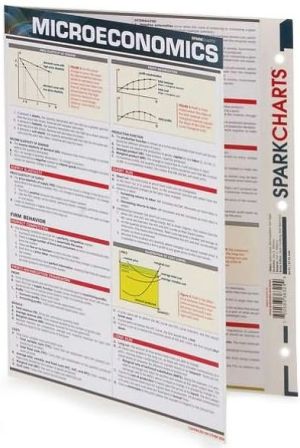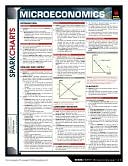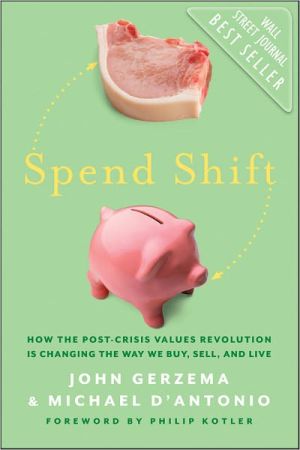Cost-Benefit Analysis: Concepts and Practice
For courses in Cost-Benefit Analysis, taught in Economics Departments, Public Policy Departments, and Public Administration Departments. Also ideal forpracticing policy analysts andpublic managers.This authoritative, market leading book is distinct for it's consistent application of a nine-step framework for conducting or interpreting a cost-benefit analysis.
Search in google:
For courses in Cost-Benefit Analysis, taught in Economics Departments, Public Policy Departments, and Public Administration Departments. Also ideal forpracticing policy analysts andpublic managers.This authoritative, market leading book is distinct for it's consistent application of a nine-step framework for conducting or interpreting a cost-benefit analysis. Booknews This textbook presents the theories and techniques of cost benefit analysis, illustrated with examples of CBA's real-world application. The book begins with an overview of CBA, then discusses the fundamentals of its use, the valuation of impacts, related methods, and accuracy. Throughout, it emphasizes explanation and application rather than mathematics and theory. This edition includes new material on the application of CBA in developing countries, the social discount rate, shadow prices, and the value of information. Annotation c. Book News, Inc., Portland, OR (booknews.com)
PREFACE: \ PREFACE\ Collaborative academic projects often take longer than originally anticipated, not just because of the normal delays of coordinating the efforts of busy people but also because initially modest goals can become more ambitious as participants delve into their subject. We confess to both these sins with respect to preparing the first edition of this text. Our original plans made in 1990 were very modest. We intended to use an expanded version of the chapter on cost-benefit analysis in the text Policy Analysis: Concepts and Practice by David Weimer and Aidan Vining as the conceptual foundation for a collection of cases. Our goal was to produce a book that would be conceptually sound, practically oriented, and easily accessible to both students and practitioners. Though our final product was far different in form and content than we initially planned, we believe that our first edition was such a book.\ Our plans evolved for a number of reasons. Perhaps most importantly, through our teaching of undergraduate and graduate students as well as our experiences training government employees, we realized that many topics demanded extended treatment if the essential basics were to be effectively conveyed and solid foundations laid for further learning of advanced topics. We also decided that fully integrating illustrations and examples with concepts and methods is pedagogically superior to presenting independent cases. The result was a series of chapters that develop conceptual foundations, methods of application, and extensions of cost-benefit analysis through numerous practical examples and illustrations.\ Our own use of the bookin teaching, as well as comments from other teachers and students, helped us identify several areas for improvement in this second edition. In addition to adding new material, including an entire chapter on applying cost-benefit analysis in developing countries, we revised and reorganized many chapters to make the presentation clearer and more effective. For example, we essentially rewrote the chapter on the social discount rate, added considerable new material on obtaining shadow prices from secondary sources, expanded the discussion of the value of information, and divided two long chapters into shorter and more manageable ones.\ These improvements were made with our three intended audiences in mind. First, we intend the book for use in courses on public-sector decision making offered in graduate programs in public policy analysis, urban planning, public administration, business, economics, public health, and environmental studies. Second, we envision it being used at the undergraduate level either as a primary text for a course on cost-benefit analysis or as a supplementary text for economics courses in public finance, public-sector economics, and policy analysis. Third, we intend it to be useful to policy analysts and public managers as a general introduction and practical guide to cost-benefit analysis, as well as a starting point for exploring advanced topics. In order to be appropriate for these diverse audiences, the second edition continues to emphasize clear discussion over formal mathematics, and application over abstract theory. Nevertheless, we think that we cover important, if difficult, conceptual issues in adequate detail both as a framework for thoughtful application and as a basis for further study.\ The process of preparing the second edition has been a rewarding one for us. As during preparation of the first edition, we were forced to think more deeply about some topics that we thought we had already mastered and to develop others with which none of us was very familiar. We did this enjoyably together through numerous exchanges of drafts and during an intensive work session at the University of British Columbia.\ Our project was also made more productive and enjoyable by our many colleagues and students who gave us advice, comments, encouragement, or information. We thank here just a few people who were particularly helpful: Marcus Berliant, Edward Bird, James Brander, Ian Davis, John DeWald, Haynes Goddard, Tim Grindling, Eric Hanushek, Robert Havemen, Stanley Engerman, Doug Landin, Walter Oi, W. G. Waters JI, and Michael Wolkoff. We thank Roy 1. Gobin, Loyola University, Chicago; George T. Fuller, Wagner Graduate School, New York University; Ruth Shen, San Francisco State University; and Larry Karp, University of California at Berkeley, who wrote thoughtful reviews of the first edition for the publisher, and Laurie T. Johnson, State University of New York, Albany; Roger G. Noll, Stanford University; Terri A. Sexton, California State University, Sacramento; and Nachum Sicherman, Columbia University, who offered valuable comments during preparation of the second edition. We especially thank Mark Moore, whose joint work with two of us helped us substantially improve our discussion of the social discount rate, and Roger Noll, who made extremely valuable suggestions that prompted many other substantial revisions. Of course, they are not responsible for any errors that remain.\ NEW INSTRUCTIONAL MATERIALS\ We are pleased to provide our users with two new supplements to the textbook. Instructors and students will be able to log on to ...
Ch. 1Introduction to cost-benefit analysis1Ch. 2Conceptual foundations of cost-benefit analysis26Ch. 3Basic microeconomic foundations of cost-benefit analysis51Ch. 4Valuing benefits and costs in primary markets73Ch. 5Valuing benefits and costs in secondary markets112Ch. 6Discounting benefits and costs in future time periods131Ch. 7Dealing with uncertainty : expected values, sensitivity analysis, and the value of information165Ch. 8Option price and option value200Ch. 9Existence value222Ch. 10The social discount rate236Ch. 11Valuing impacts from observed behavior : demonstrations279Ch. 12Valuing impacts from observed behavior : direct estimation of demand curves314Ch. 13Valuing impacts from observed behavior : indirect market methods337Ch. 14Contingent valuation : using surveys to elicit information about costs and benefits369Ch. 15Shadow prices from secondary sources403Ch. 16Shadow prices : applications to developing countries441Ch. 17Cost-effectiveness analysis463Ch. 18Distributionally weighted cost-benefit analysis488Ch. 19How accurate is CBA?507
\ BooknewsThis textbook presents the theories and techniques of cost benefit analysis, illustrated with examples of CBA's real-world application. The book begins with an overview of CBA, then discusses the fundamentals of its use, the valuation of impacts, related methods, and accuracy. Throughout, it emphasizes explanation and application rather than mathematics and theory. This edition includes new material on the application of CBA in developing countries, the social discount rate, shadow prices, and the value of information. Annotation c. Book News, Inc., Portland, OR (booknews.com)\ \








